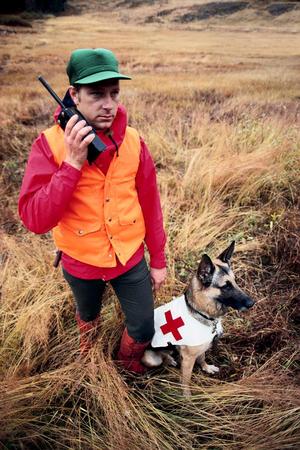There are two main reasons why civilians would need to organize a search and rescue mission: (1) A child or adult is missing in your town, and law enforcement must wait 48 hours before beginning the search; and (2) Help from law enforcement is not immediately available due to location. In either circumstance, it is important that the individuals involved in the search and rescue mission be careful and that they organize themselves in the safest and most efficient fashion.
Organize a Search and Rescue Mission: How Much Ground Needs to be Covered?
The first question that presents itself will be how much ground you need to cover. This all depends on where the missing person lost his or her way and natural barriers that might define the perameters. For example, if you are looking for a ten-year-old child and your town is flanked by mountains or ridges in all directions, you can safely assume that he or she does not have the ability to scale those natural barriers. You can also determine the ground that must be covered if you know the approximate time (within an hour) of when the missing person headed out. Most people (depending on their age and health) walk between two and four miles per hour. You can limit your search and rescue mission to those criteria.
Organize a Search and Rescue Mission: How Many People are Available to Search?
A search and rescue mission with only five volunteers will progress much differently than one with fifty able bodies. One of the risks you take with a search and rescue mission – especially in the wilderness – is that the search party volunteers have the ability to get lost themselves. This is why the experts advise search party teams to have no less than two people and ideally at least four in order to protect those who are looking for the victim. Once you know how many people are available for the search, you can assign territories in which to look.
Organize a Search and Rescue Mission: Where is the Victim Most Likely to Go
If someone in the search party is acquainted with the victim, you might consider starting your search in places where that individual is likely to go. For example, if you are looking for a pre-teen child in a city, and you know that the child enjoys video games, you might start your search in video arcades and electronics stores. If you are in the widlerness and you know that the adult victim enjoys birdwatching, you should start your search in open areas or in marshes. The point is that, in a large search area, you are better off looking in the most obvious places first.
Organize a Search and Rescue Mission: What are the Conditions of the Mission?
Another factor that will play a part in your search and rescue mission are the conditions of the weather and terrain. A search party in the mountains will progress much differently than one in the city; you will also organize the mission differently in warm weather than if there is snow. Make sure that all search volunteers are adequately dressed (coats if it is cold and hiking boots if you are in rugged terrain) and arm each party with a walkie-talkie or a cell phone. Search and rescue missions that take place at night require flashlights with spare batteries and if you are searching large areas with snow give everyone sunglasses to guard against snowblindness.
Organize a Search and Rescue Mission: Where is the “base camp”?
This applies mostly to search and rescue missions that take place in the wilderness, but even if you are conducting the search in a city or town, you should have a home base. If you are in the victim’s town, the most logical base camp is at his or her house in case the victim returns or calls. In the wilderness, base camp should be at the most convenient camp site where supplies are kept and a fire is kept going. Also, if you are in the middle of nowhere, at least two people should remain at the base camp to make preparations for first aid in case it is needed.
Organize a Search and Rescue Mission: When Should Searchers Pack it In?
No search and rescue team should ever be open-ended. Assign territories to each of the search parties and estimate how long it will take to cover each area. Once you have a good idea, ask everyone to be back at base camp at a specific time. This doesn’t mean that you must end the search after three hours; once you’ve regrouped, you can decide on the best way to move forward. This lessens the chance that that search parties will get lost.
Reference:
- www.fema.gov, A Job That Has Gone to the Dogs by Kelli Michael
